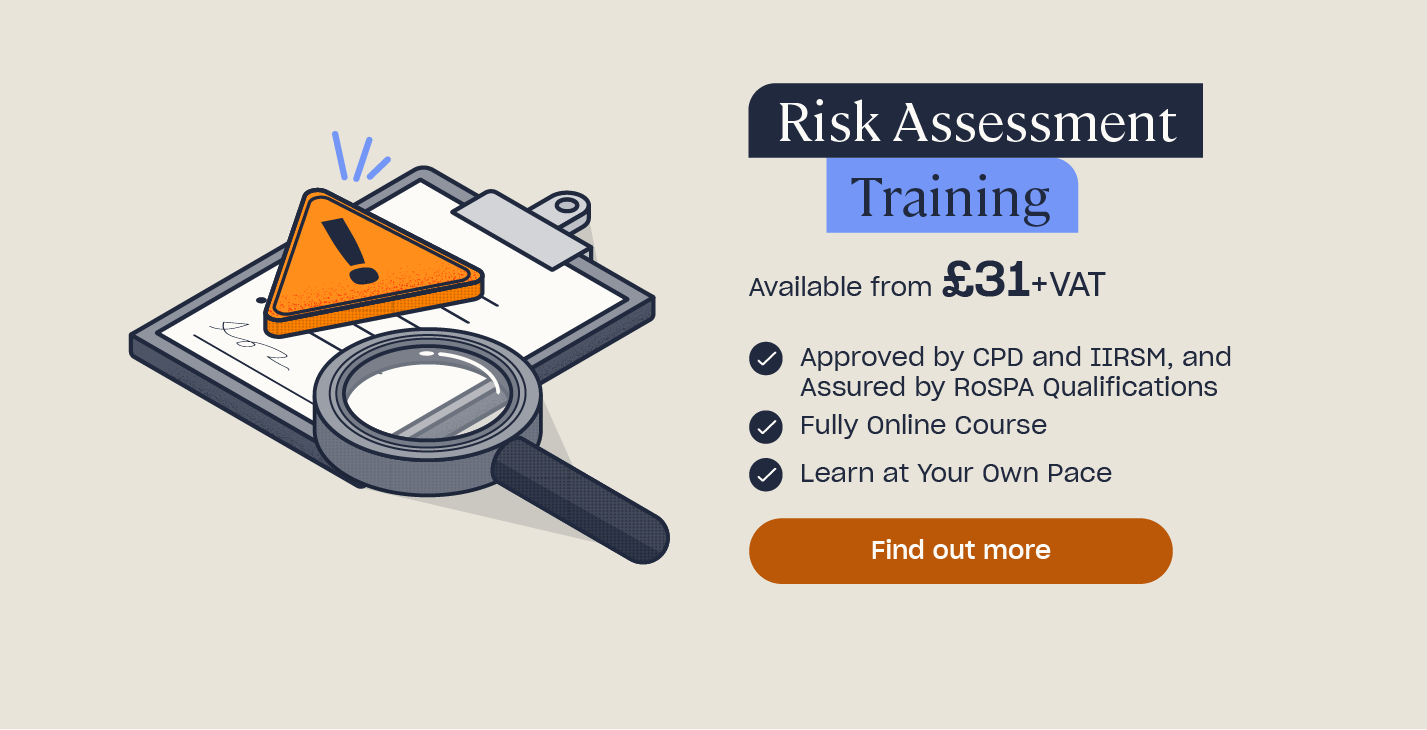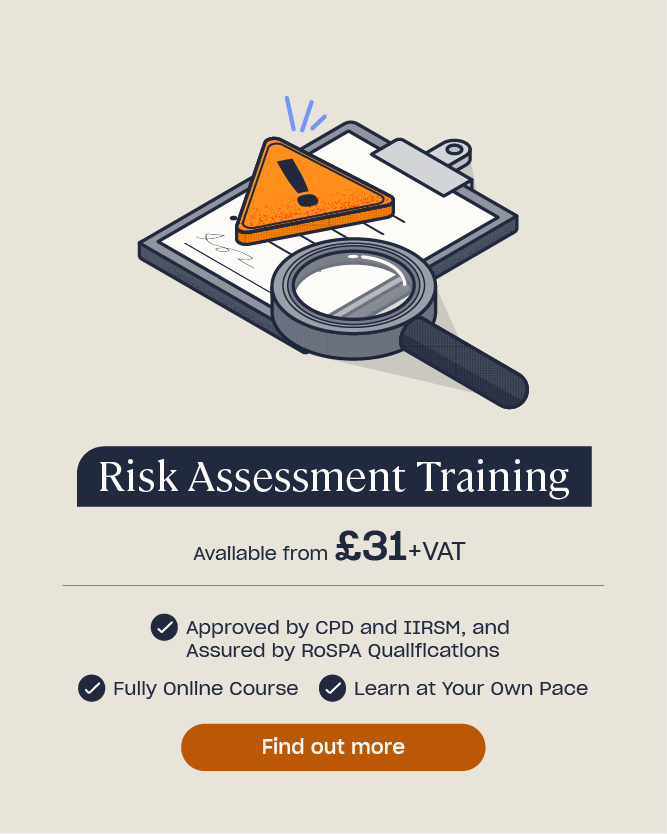Risk Assessment for Boats
‘Risk assessment’ is an ominous phrase to many and throws up visions of health and safety breaches, red tape and high-vis jackets.
In truth, a risk assessment doesn’t need to be half as complicated or technical as it sounds.
In regards to your boat, a risk assessment is simply a careful examination of what on your boat (and around it) could potentially cause harm to people so you can learn whether further precautions need to be taken. This process is obviously a greater undertaking for larger ships and liners, but for the smaller sailing, fishing and rowing boats that you see in the harbour, a risk assessment can be completed in a matter of minutes.
Need a Training Course?
Our Risk Assessment Training helps you to understand each of the key steps of a risk assessment, including how to identify risks, manage hazards and determine the likelihood of harm, so that you are confident in carrying out a risk assessment.
5 Key Steps for Risk Assessment
Step 1 – What are the hazards?
This step involves carefully considering each aspect of your boat and identifying which things have the potential to cause harm.
Identifying the hazards doesn’t have to take a long time. You may read through the following checklist and be able to confirm that the hazards on your boat are being dealt with perfectly fine already – and that’s great – but you may also become aware of potential dangers that need sorting out before setting sail.
To identify the hazards, you’ll need to think about:
- Access – how do people climb aboard? Is there a risk that they might trip or fall? Is there a handrail? Is the walkway or ramp slippery?
- Mooring – are ropes in good condition or are they showing signs of wear and tear? Could ropes be tripped over? Is the boat tied securely?
- The deck – could the surface become slippery with water? Do things need tidying away (ropes, tools etc) to prevent people tripping? Is the deck in good condition or does it need maintenance?
- The bow – could the surface become slippery with water? Is the bow enclosed by a railing to prevent people falling overboard, particularly children? Do you know what to do if someone slips and hurts themselves?
- The cabin – if there are stairs down to the cabin, is there a handrail? Could the steps become slippery with water? Can objects fall from height when the boat is moving and injure people?
- The seat – is the captain’s seat at a suitable height to prevent reaching and stretching? Are you able to sit comfortably for long periods of time?
- Fixtures and fittings – is everything fully functional or do things need repairing or replacing? Is the battery fully charged? Is the electrical system working correctly? Are all lightbulbs functioning?
- Fuel – Is your fuel tank topped off? Are the engine oil and coolant levels sufficient? Are there sufficient gas and water supplies?
- Emergency equipment – do you have the correct fire-fighting equipment on board? Do you have a fully-stocked first aid kit and at least two life jackets? Do you know what to do if someone falls over board?
- The weather – have you checked the forecast before setting off for unsafe conditions? Do you have a way of being alerted about adverse whether whilst out at sea/on the water? If your boat doesn’t have a cabin, are people at risk of getting cold and wet?
This list is not exhaustive and you may identify hazards that are particular to your own type of boat.
Step 2 – Who is at risk?
This step simply means thinking about who is likely to be harmed by the identified hazards on your boat. It may be the case that you are the only person at risk. Alternatively, think about whether the hazards may affect:
- Crew members who work on the boat with you.
- Family, friends and other passengers.
- Passers-by whilst the boat is moored.
- Other boat users whilst on the water.
You’ll also need to consider how these people may be affected – would they be harmed directly or indirectly by the identified hazards?
Step 3 – How can the hazards be controlled?
This step of the risk assessment requires you to look at each of your identified hazards and decide what can be done to manage them and prevent them from causing people harm. Many hazards are very simple to control – like doing a simple check to ensure lightbulbs are working – but others will need more thought. Examples of controls include:
- Have a mop on-hand to dry off wet surfaces.
- Keep tools stored away from walkways to prevent tripping.
- Ensure ropes are kept in good condition and tidied away when not in use.
- Keep all equipment, fixtures and fittings well-maintained and in good repair.
- Keep emergency equipment nearby at all times.
- Install handrails to help prevent falls.
- Put locks on cabin cupboards to prevent items falling out.
- Alter the captain’s seat to make it more ergonomic and comfortable.
- Ensure fuel supplies are topped up before setting sail.
- Check the weather forecast before setting sail.
- Provide everyone on board with a lifejacket.
- Ensure crew members wear warm, waterproof clothing.
- Train everyone on what to do in an emergency.
It’s a good idea to start a maintenance schedule for all items, fixtures and fittings on your boat. The frequency of this is up to you but, as an example, you could check everything with a quick visual check each time you set sail and then more thoroughly once a month.
Step 4 – Keep a written record
This step is non-essential for domestic boat owners but it’s a good idea nonetheless. Keeping a written record means writing down your findings from each step of the risk assessment so that you can refer to it later. This could just be a simple table or list of all the hazards plus their control measures, the aim being that if an accident was to happen, you could prove that you haven’t ignored the risks and have taken precautions to prevent harm. Keeping a written record is particularly important for commercial boats that take passengers who are members of the public.
Step 5 – Review the risks
This final step of the risk assessment process requires you to look back at your risk assessment findings and review them on a regular basis, such as every year or whenever something has changed. This step becomes a lot easier if you have a written record of your risk assessment as it gives you something to compare with.
To review the risks, work your way down your list of identified hazards and check to ensure that the controls are still working. You may find that nothing has changed and all the risks are being managed well, you may learn that you need to take further precautions or you may spot new hazards that weren’t there before.
For example, your first risk assessment may have identified that the steps into the cabin were getting wet and causing people to slip. As a control you decided to keep a cloth nearby to wipe the steps down from time to time. Now that you’re reviewing the hazard, however, you’ve learnt that this control hasn’t really solved the problem and decide that you now need to install a handrail to try and improve the situation further.







